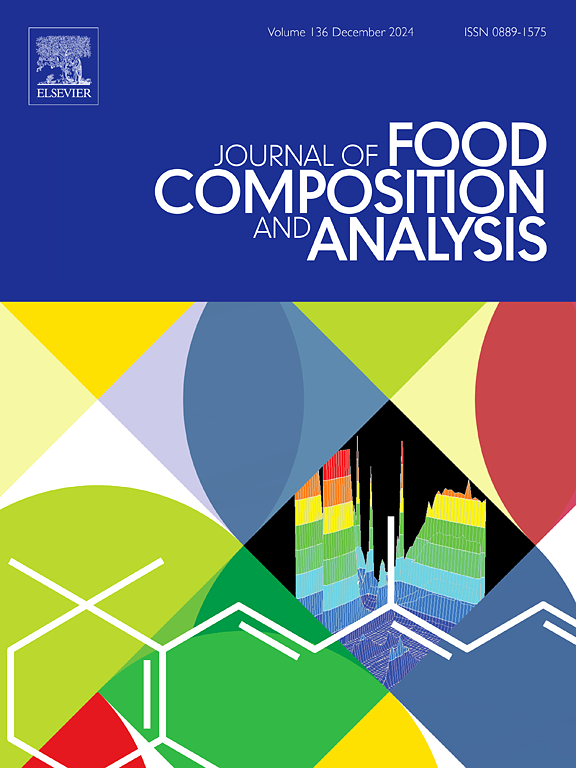Detection of bissap calyces and bissap juices adulteration with sorghum leaves using NIR spectroscopy and VIS/NIR spectroscopy
IF 4
2区 农林科学
Q2 CHEMISTRY, APPLIED
引用次数: 0
Abstract
Adulteration of bissap calyces and juices (‘sobolo’) with sorghum leaves presents a potential decrease in nutritional benefits to consumers. This study investigated the detection of bissap calyces and juices adulteration with sorghum leaves using near-infrared (NIR) and ultraviolet-visible (VIS/NIR) spectroscopy. Eight samples of bissap calyces-sorghum leaf formulations were prepared using eight concentrations (0, 5, 10, 20, 30, 40, 50 and 100 %) w/w. Each sample was prepared in cut, whole and powder forms, respectively. The samples were then used to prepare bissap juices in triplicates. The bissap calyces-sorghum leaf formulations were analyzed with NIRS, while bissap juices were analyzed with VIS/NIR spectroscopy. Results from the physicochemical analysis showed that the unadulterated samples had lower pH and higher (brix, titratable acidity, and total phenolic content), with no intense color change for all forms when compared to adulterated samples. PCA showed no difference between adulterated and unadulterated samples based on forms and concentrations. LDA showed a 100 % classification for all cut samples and some misclassifications for whole and powder samples for both NIR and VIS/NIR spectroscopy. Also, there were observable differences between adulterated and unadulterated juices produced from cut forms. PLSR models predicted different concentrations of adulterants present in both bissap calyces and juices. Bissap juices adulterated with sorghum leaves are not easily detectable and have reduced concentrations of some beneficial nutritional compounds present in sobolo. NIR and VIS/NIR spectroscopy, combined with chemometric techniques such as PCA, LDA, and PLSR, as a rapid detection technique, showed good potential for sobolo authentication.
求助全文
约1分钟内获得全文
求助全文
来源期刊

Journal of Food Composition and Analysis
工程技术-食品科技
CiteScore
6.20
自引率
11.60%
发文量
601
审稿时长
53 days
期刊介绍:
The Journal of Food Composition and Analysis publishes manuscripts on scientific aspects of data on the chemical composition of human foods, with particular emphasis on actual data on composition of foods; analytical methods; studies on the manipulation, storage, distribution and use of food composition data; and studies on the statistics, use and distribution of such data and data systems. The Journal''s basis is nutrient composition, with increasing emphasis on bioactive non-nutrient and anti-nutrient components. Papers must provide sufficient description of the food samples, analytical methods, quality control procedures and statistical treatments of the data to permit the end users of the food composition data to evaluate the appropriateness of such data in their projects.
The Journal does not publish papers on: microbiological compounds; sensory quality; aromatics/volatiles in food and wine; essential oils; organoleptic characteristics of food; physical properties; or clinical papers and pharmacology-related papers.
 求助内容:
求助内容: 应助结果提醒方式:
应助结果提醒方式:


